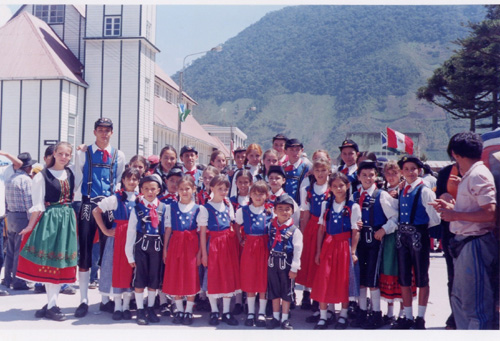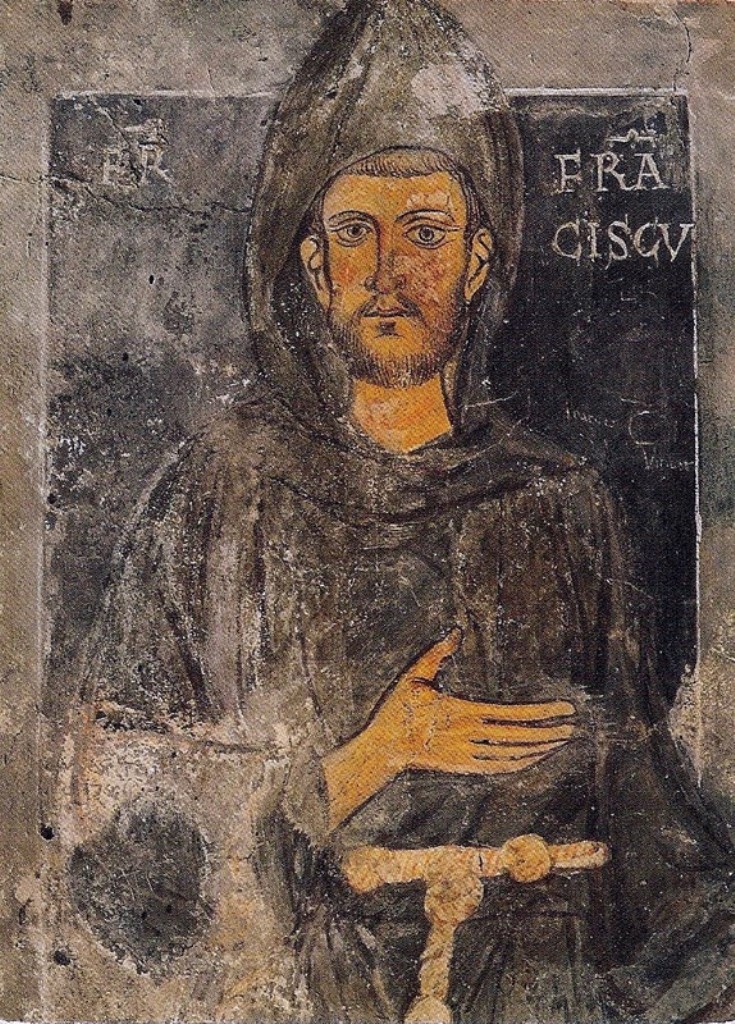|
Cerro De La Sal
The Cerro de la Sal or Cerro de Sal, (''Mountain of Salt'') is located in Villa Rica District of Oxapampa Province in Pasco Department, Peru. The Cerro de la Sal was an important source of salt for the pre-Columbian indigenous people of the Amazon Basin in Peru. Because of the seasonal concentration at the mountain by indigenous people (Indians), especially the Asháninka and Yanesha (Amuesha), Spanish missionaries, settlers, and soldiers were attracted to the Cerro de la Sal as early as 1635. Several attempts by Franciscan missionaries to establish Roman Catholic missions in the area were thwarted by uprisings of the indigenous people. In the late 19th century the Peruvian government established a foothold leading to the settlement of Europeans and Andean peoples in the area. Cerro de la Sal is used loosely to refer to the surrounding region and to the chain of mountains extending eastward from the salt deposits. Description Google Earth locates the Cerro de la Sal about ... [...More Info...] [...Related Items...] OR: [Wikipedia] [Google] [Baidu] |
Pasco Department
Pasco () is a department and region in central Peru. Its capital is Cerro de Pasco. Political division The region is divided into 3 provinces (, singular: ), which are composed of 28 districts (''distritos'', singular: ''distrito''). Provinces The provinces, with their capitals in parentheses, are: * Daniel Alcídes Carrión (Yanahuanca) * Oxapampa (Oxapampa) * Pasco (Cerro de Pasco) Places of interest * Cerro de la Sal * El Sira Communal Reserve * Gran Pajonal * San Matías–San Carlos Protection Forest * Yanachaga–Chemillén National Park Yanachaga–Chemillén National Park () is a protected area located in the region of Pasco Region, Pasco, Peru. It preserves part of the rainforests and cloud forests of central Peru. It is a refuge for wildlife from the Pleistocene, a time when t ... * Yanesha Communal Reserve External links Gobierno Regional Pasco – Pasco Regional Government official website Pasco Pasco {{Pasco-geo-stub ... [...More Info...] [...Related Items...] OR: [Wikipedia] [Google] [Baidu] |
Tupi People
The Tupi people, a subdivision of the Tupi-Guarani linguistic families, were one of the largest groups of indigenous peoples in Brazil before its colonization. Scholars believe that while they first settled in the Amazon rainforest, from about 2,900 years ago the Tupi started to migrate southward and gradually occupied the Atlantic coast of Southeast Brazil. Many Tupi people today are merged with the Guaraní people, forming the Tupi–Guarani languages. The Guarani languages are a subdivision of the Tupian languages. History The Tupi people inhabited 3/4 of all of Brazil's coast when the Portuguese first arrived there. In 1500, their population was estimated at 1 million people, nearly equal to the population of Portugal at the time. They were divided into tribes, each tribe numbering from 300 to 2,000 people. Some examples of these tribes are: '' Tupiniquim'', '' Tupinambá'', ''Potiguara'', '' Tabajara'', '' Caetés'', ''Temiminó'', ''Tamoios''. The Tupi were adept ... [...More Info...] [...Related Items...] OR: [Wikipedia] [Google] [Baidu] |
Peruvian Corporation
The Peruvian Corporation Ltd. (alternate: Peruvian Corporation of London) was registered under the Companies Act in London on 20 March 1890. Its board of directors included ten members led by Sir Alfred Dent G A Ollard, of Smiles and Co Solicitors, was Manager in London, T E Webb was Secretary, with Clinton Dawkins and William Davies (nephew of W.R. Grace and of Grace Brothers - Callao) as the first representatives in Peru. The company was formed with the purpose of canceling Peru's external debt and to release its government from loans it had taken out through bondholders at three times (in 1869, 1870, 1872), in order to finance the construction of railways. The main purpose of the incorporation included acquiring the rights and undertaking the liabilities of bondholders. History After winning independence from Spain in 1826, Peru was financially strapped. Over the decades financial problems worsened, and Peru needed money. In 1865 then 1866, bonds were issued that were retired ... [...More Info...] [...Related Items...] OR: [Wikipedia] [Google] [Baidu] |
Juan Santos Atahualpa
Juan Santos Atahualpa ( – ) was the messianic leader of a successful indigenous rebellion in the Amazon Basin and Andean foothills against the Viceroyalty of Peru in the Spanish Empire. The Juan Santos Rebellion began in 1742 in the Gran Pajonal among the Asháninka people. The indigenous people expelled Catholic missionaries and destroyed or forced the evacuation of 23 missions, many of them defended, in the central jungle area of Peru. Several Spanish military expeditions tried to suppress the rebellion but failed or were defeated. In 1752, Santos attempted to expand his rebellion into the Andes and gain the support of the highland people. He captured the town of Andamarca and held it for three days before withdrawing to the jungle. Santos disappeared from the historical record after 1752. Santos, Jesuit-educated with both Christian and millenarian ideas, claimed to be the reincarnation of Atahualpa, the Inca emperor at the time of the Spanish conquest of Peru. His objec ... [...More Info...] [...Related Items...] OR: [Wikipedia] [Google] [Baidu] |
Convent Of Santa Rosa De Ocopa
Santa Rosa de Ocopa is the name of a district of Concepción province, Department of Junin in Peru. It is also the name of the capital of the district, and the name of a historic monastery in the district called the Convent of Santa Rosa de Ocopa. In 2017, the district had a population of 2,129 and an area of . The capital of the district, the town of Santa Rosa, had a population of 1,263 in 2017 and an elevation of above sea level. The name "Ocopa" comes from the Quechua "ocupi," meaning "within" or "corner." Santa Rosa de Ocopa is located in the Mantaro Valley. The valley has a large area of arable land, unusual in the high altitudes of the Andes. Dating back to Pre-Columbian times, the Mantaro Valley has been a breadbasket for the people of the Andes.''Land Use in the Andes: Ecology and Agriculture in the Madero Valley of Peru'' (1979), International Potato Center, p. 15 Convent of Santa Rosa de Ocopa Santa Rosa was a place of importance after the Franciscans established th ... [...More Info...] [...Related Items...] OR: [Wikipedia] [Google] [Baidu] |
Polygyny
Polygyny () is a form of polygamy entailing the marriage of a man to several women. The term polygyny is from Neoclassical Greek πολυγυνία (); . Incidence Polygyny is more widespread in Africa than in any other continent. Some scholars theorize that the History of slavery, slave trade's impact on the male-to-female sex ratio was a key factor in the emergence and fortification of polygynous practices in regions of Africa. Polygyny is most common in a region known as the "polygamy belt" in West Africa and Central Africa, with the countries estimated to have the highest polygamy prevalence in the world being Burkina Faso, Mali, Gambia, Niger and Nigeria. In the region of sub-Saharan Africa, polygyny is common and deeply rooted in the culture, with 11 percent of the population of sub-Saharan Africa living in such marriages (25 percent of the Muslim population and 3 percent of the Christian population, as of 2019). Polygyny is especially widespread in West Africa, with the ... [...More Info...] [...Related Items...] OR: [Wikipedia] [Google] [Baidu] |
Paititi
Paititi is a legendary Inca lost city or utopian rich land. It allegedly lies east of the Andes, hidden somewhere within the remote rainforests of southeast Peru, northern Bolivia or northwest Brazil. The Paititi legend in Peru revolves around the story of the culture-hero Inkarri, who, after he had founded Q'ero and Cusco, retreated toward the jungles of Pantiacolla to live out the rest of his days in his refuge city of Paititi. Other versions of the legend see Paititi as an Inca refuge in the border area between Bolivia and Brazil. Recent findings In 2001, the Italian archaeologist Mario Polia discovered the report of the missionary Andres Lopez in the archives of the Jesuits in Rome. In the document, which dates from about 1600, Lopez describes a large city rich in gold, silver, and jewels, located in the middle of the tropical jungle called Paititi by the natives. Lopez informed the Pope about his discovery. Lopez's report and its discovery were widely publicized, though its ... [...More Info...] [...Related Items...] OR: [Wikipedia] [Google] [Baidu] |
Pedro Bohórquez
Pedro Chamijo (1602 in Granada, Spain – January 3, 1667 in Lima, Peru), more commonly known as Pedro Bohórquez (or Bohorques) or Inca Hualpa, was a Spanish adventurer in the Viceroyalty of Peru. He was probably born in Spain, but some sources say he was born in Quito. After trying to make his fortune in various schemes in Peru, around 1656 he had himself crowned Inca (emperor) of the Calchaquíes Indians, fooling not only the Indians but also Spanish government and clerical officials. His almost legendary story is an example of the picaresque, with a tragic ending. Of campesino origin, he was probably a Morisco (Iberian Muslim converted to Christianity) or Mudéjar (Iberian Muslim not converted to Christianity). He learned to read and write studying with the Jesuits in Cádiz. He embarked from Spain for America at a young age, attracted by the promise of easy riches that the New World seemed to offer. He tried various schemes over many years in Peru, but without making the fortu ... [...More Info...] [...Related Items...] OR: [Wikipedia] [Google] [Baidu] |
La Merced, Junin
LA most frequently refers to Los Angeles, the second most populous city in the United States of America. La, LA, or L.A. may also refer to: Arts and entertainment Music *La (musical note), or A, the sixth note *"L.A.", a song by Elliott Smith on ''Figure 8'' (album) * ''L.A.'' (EP), by Teddy Thompson *''L.A. (Light Album)'', a Beach Boys album * "L.A." (Neil Young song), 1973 *The La's, an English rock band *L.A. Reid, a prominent music producer *Yung L.A., a rapper *Lady A, an American country music trio * "L.A." (Amy Macdonald song), 2007 *"La", a song by Australian-Israeli singer-songwriter Old Man River *''La'', a Les Gordon album Other media * l(a, a poem by E. E. Cummings *La (Tarzan), fictional queen of the lost city of Opar (Tarzan) *''Lá'', later known as Lá Nua, an Irish language newspaper *La7, an Italian television channel *LucasArts, an American video game developer and publisher * Liber Annuus, academic journal Business, organizations, and government agenc ... [...More Info...] [...Related Items...] OR: [Wikipedia] [Google] [Baidu] |
Franciscan
The Franciscans are a group of related organizations in the Catholic Church, founded or inspired by the Italian saint Francis of Assisi. They include three independent Religious institute, religious orders for men (the Order of Friars Minor being the largest contemporary male order), an order for nuns known as the Order of Saint Clare, and the Third Order of Saint Francis, a Third Order of Saint Francis#Third Order Regular, religious and Secular Franciscan Order, secular group open to male and female members. Franciscans adhere to the teachings and spiritual disciplines of the founder and of his main associates and followers, such as Clare of Assisi, Anthony of Padua, and Elizabeth of Hungary. Several smaller Franciscan spirituality in Protestantism, Protestant Franciscan orders have been established since the late 19th century as well, particularly in the Lutheranism, Lutheran and Anglicanism, Anglican traditions. Certain Franciscan communities are ecumenism, ecumenical in nat ... [...More Info...] [...Related Items...] OR: [Wikipedia] [Google] [Baidu] |



